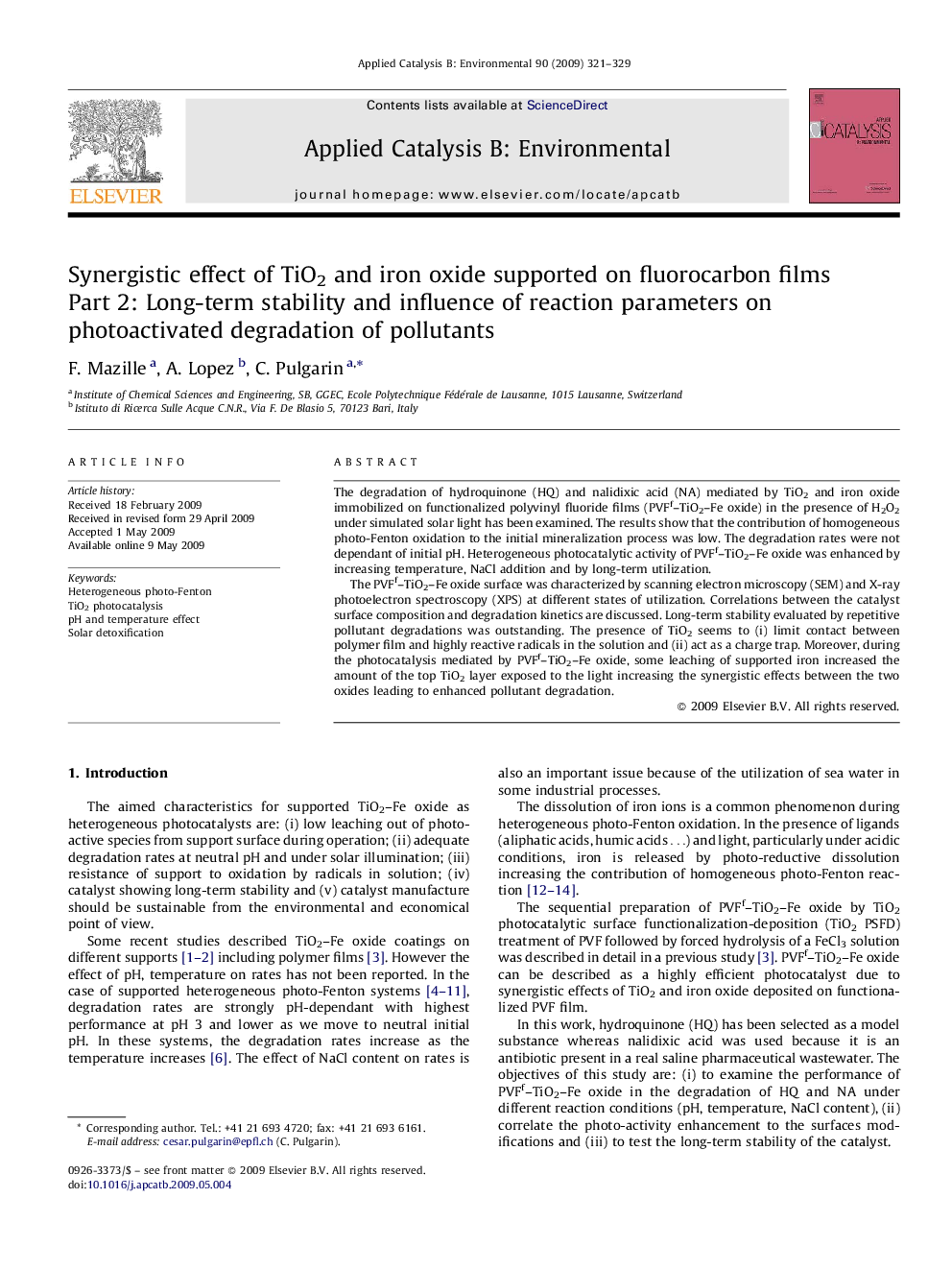| Article ID | Journal | Published Year | Pages | File Type |
|---|---|---|---|---|
| 47637 | Applied Catalysis B: Environmental | 2009 | 9 Pages |
The degradation of hydroquinone (HQ) and nalidixic acid (NA) mediated by TiO2 and iron oxide immobilized on functionalized polyvinyl fluoride films (PVFf–TiO2–Fe oxide) in the presence of H2O2 under simulated solar light has been examined. The results show that the contribution of homogeneous photo-Fenton oxidation to the initial mineralization process was low. The degradation rates were not dependant of initial pH. Heterogeneous photocatalytic activity of PVFf–TiO2–Fe oxide was enhanced by increasing temperature, NaCl addition and by long-term utilization.The PVFf–TiO2–Fe oxide surface was characterized by scanning electron microscopy (SEM) and X-ray photoelectron spectroscopy (XPS) at different states of utilization. Correlations between the catalyst surface composition and degradation kinetics are discussed. Long-term stability evaluated by repetitive pollutant degradations was outstanding. The presence of TiO2 seems to (i) limit contact between polymer film and highly reactive radicals in the solution and (ii) act as a charge trap. Moreover, during the photocatalysis mediated by PVFf–TiO2–Fe oxide, some leaching of supported iron increased the amount of the top TiO2 layer exposed to the light increasing the synergistic effects between the two oxides leading to enhanced pollutant degradation.
